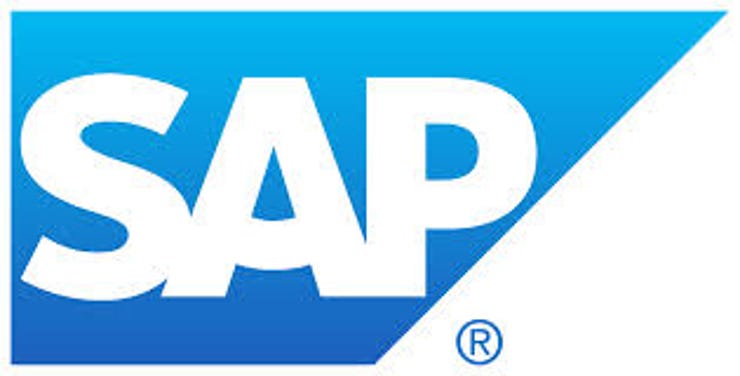SAP says S/4HANA and AI are ready for prime time


This year's SAP SAPPHIRE conference was not an occasion of major announcements. When you have such a wide and deep installed base, the last thing you want to do is blindside your clients. But with the clock ticking on the sunset of standard support for SAP Business Suite -- currently eight years and counting -- SAP chairman Hasso Plattner claims that its replacement, S/4HANA, is now essentially feature-complete.
Like Oracle, SAP is also promoting cloud as the logical destination for new adoption and for new features is going cloud-first. But that's where the similarities end. While Oracle predicts 80 - 90% of its workloads will be running in the cloud by 2025, SAP sees a more hybrid future. While there are good arguments to be made about the cloud becoming more secure than on premise data centers, there remain industries such as healthcare and financial services where regulation or internal policies for safeguarding customer data will favor safeguarding data on premises.
Architecturally, both are 180 degrees apart. While Oracle runs its own applications in its own cloud data centers, SAP is taking a more varied approach. There is the SAP Cloud Platform, which SAP runs for its managed HANA Enterprise Cloud services, but it will now allow customers to run HANA or S/4HANA via a Cloud Foundry implementation in the public cloud of their choice; AWS is the first cloud provider for Cloud Foundry SAP support, with Azure and Google Cloud to follow.
That same variation applies to applications. Oracle's architecture is far more coherent, being on a single code base and database. As the result of a chain of acquisitions, SAP's is varied. There is S/4HANA, which is intended as the flagship. And then there are others such as SAP Business One, SAP Business ByDesign, Ariba, and Success Factors. While SAP is likely to bulk up S/4HANA to have overlapping capability such as procurement, existing SAP SaaS services are likely to live on.
That provides a bit of a challenge to SAP, given Plattner's mantra to avoid data movement to the extent possible. So when you have financials and planning in your S/4HANA application, procurement in Ariba, and human capital management in Success Factors, getting a single picture of the truth will come through loosely coupled messaging-style integrations.
But there's lemonade to be made from the lemons. SAP's multi-polar application ecosystem makes good practice for managing integration in a heterogeneous world. Here, SAP's strategy is a work in progress. It has planted a stake in the ground in federating big data query with HANA Vora and federating data storage with Smart Data Access. That begs the question of which provider in a federated, heterogeneous environment will own the query and the assurance that the results are based on validated data. SAP dropped broad hints during a late afternoon exhibit hall keynote that it would take an active approach in managing and monitoring the pipelines for sharing data.
This being 2017, enterprise solutions vendors ignore AI at their peril. Although a bit late to the party, SAP came out swinging last fall by incorporating predictive analytics and some machine learning capabilities in the SAP Analytics Cloud that provides a guided experience for discovering, transforming, and charting data. The SAP offering is not an alternative to cloud-based machine learning services from the major cloud providers; instead, it competes more with IBM Watson Analytics and Amazon QuickSight.
SAP is now cranking the volume knob with a services-based offering that has been branded Leonardo, as Asha Barbaschow reported. Hasso Plattner explained before an analyst audience that Leonardo is not a product. From our observations at SAPPHIRE, it was the most-promoted and least understood offering at the show. In almost every breakout session and press/media briefing that we attended, the question of "What is Leonardo?" kept coming up.
Leonardo was originally an umbrella brand for SAP building smart applications for the Internet of Things. Now it's something more. For now, Leonardo is a combined services and tools offering, involving an SAP consultative engagement with the client to help identify requirements and opportunities for smart applications that extend their core enterprise systems. It is part of an SAP strategy that all customizations and added functionality to its next-generation enterprise applications and cloud services will be extensions, coupled via APIs that will leave the underlying code base intact. That strategy came as a valuable lesson from the experiences of legacy SAP R/3 ERP users, where routine upgrade processes were routinely complicated and costly owing to the need to engineer around client customizations to the underlying ABAP code.
We saw a couple demos of a clothing retail application, where a woman would stand in front of a screen, and based on her customer journey, the system would suggest outfits to choose from. Or an airline could monitor and optimize operations at the airport terminal for predicting customer flow. And a multimedia exhibit of "The SAP Leonardo Experience" drew endless lines.
SAP's next steps are creating vertical industry templates for providing jumpstarts for building Leonardo AI applications. It's a positive step for a program that will allow SAP to engage in the field and find out where the next wave of AI applications that could be productized will be. But in our view, branding at this point was probably a bit premature, as it raises customer expectations that there is actually packaged product.